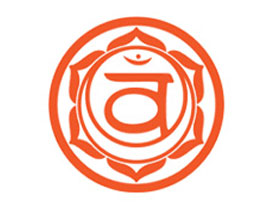Welcome to our Chakra Healing Certification Course, a transformative journey into the world of energy healing. Over five days and ten immersive hours, this course is designed to equip you with the knowledge and skills needed to understand, balance, and heal the chakras. Whether you are looking to enhance your spiritual awareness or incorporate chakra healing into your professional practice, this course offers comprehensive training led by experienced instructors.

In the body of a human, there are seven main energy centers known as "Chakras". Through these chakras, the life force energy enters the physical body. We are alive because of this life force energy. Chakras in a human body are located along the length of the spine. The seven different coloured chakras relate to different organs of the body through the nervous system and endocrine glands and are responsible for a better nourishment of our vital organs & overall wellbeing.

Muladhara or the root chakra is one of the seven primary chakras according to Hindu tantrism. It is symbolized by a lotus with four petals and the colour red.
Element: Earth
Physical location: Base of the spine.
Colour: Red
Influence: The Root Chakra affects our basic survival instincts, our sense of stability and security. When balanced, it provides the foundation for opening the higher chakras and helps us feel grounded and confident in our environment. Issues in the Root Chakra can lead to feelings of anxiety, insecurity, and financial instability.

The lord of swadisthan chakra is Lord Bharamdev Swarasti Svadhishthana, or sacral chakra, is the second primary chakra according to Hindu Tantrism.
Element: Water
Physical location: In the pelvic area.
Colour: Orange
Influence: This chakra governs our relationship with others and our ability to express emotions and experience pleasure. A balanced Sacral Chakra enhances creativity and allows for a healthy flow of emotions and ideas. Imbalances can manifest as either emotional overreaction or stifled emotions, and problems with sexual dysfunction or dependency.

Manipura is represented with a downward-pointing red triangle, signifying the tattva of fire, within a bright yellow circle, with 10 dark-blue or black petals like heavily laden rain clouds.
Element: Fire
Physical location: Between the navel and solar plexus.
Colour: Yellow
Influence: The Solar Plexus Chakra is the center of personal power, self-esteem, and self-discipline. It influences our ability to assert ourselves in various situations. When this chakra is balanced, we feel in control and have good self-esteem. An imbalance might cause feelings of powerlessness, anger, or lack of direction.

Anahata or heart chakra is the fourth primary chakra, according to Hindu Yogic, Shakta and Buddhist Tantric traditions. In Sanskrit, anahata means "unhurt, unstruck, and unbeaten". Anahata Nad refers to the Vedic concept of unstruck sound. Anahata is associated with balance, calmness, and serenity.
Element: Air
Physical location: In the center of the chest at the heart level.
Colour: Green
Influence: Central to our ability to love and connect with others, the Heart Chakra impacts our relationships and our capacity for compassion and forgiveness. A balanced Heart Chakra enables true intimacy and deep connections. An imbalance can lead to problems in relationships, lack of empathy, or heart-related physical issues.

Vishuddha, or Vishuddhi, or throat chakra is the fifth primary chakra according to the Hindu tradition of tantra. Endocrine: Thyroid. The residing deity of this chakra is Panchavaktra shiva, with 5 heads and 4 arms, and the Shakti is Shakini.
Element: Akasha
Physical location: In the neck and shoulders region.
Colour: Blue
Influence: This chakra governs our ability to communicate clearly and effectively. It influences how truthfully and openly we express our thoughts and feelings. A balanced Throat Chakra means we are good listeners and communicators. An imbalance can result in difficulties articulating thoughts, excessive fear of speaking, or talking without listening.

Ajna, or third-eye chakra, is the sixth primary chakra in the body according to Hindu tradition. It is supposedly a part of the brain which can be made more powerful through meditation, yoga and other spiritual practices just as a muscle is.
Physical location: Between the eyebrows, behind the forehead.
Organs associated: Eye, Pineal gland, Nervous system, Brain, Pituitary gland, Ear.
Colour: Indigo
Influence: The Third Eye Chakra affects our ability to see the big picture and connect to intuition. It also impacts our wisdom and decision-making. When balanced, it allows for a clear intuition and a sense of inner wisdom and vision. Imbalances might manifest as confusion, indecision, or an inability to think about or plan for the future.

Sahasrara or crown chakra is generally considered the seventh primary chakra, according to most tantric yoga traditions.The Sahasrara is described as a lotus flower with 1,000 petals of different colors. These petals are arranged in 20 layers, each layer with approximately 50 petals.
Physical location: Crown of the head.
Organs associated: Nervous system, Pituitary gland, Pineal gland.
Colour: Violet
Influence: The Crown Chakra connects us to the divine and to a higher state of consciousness. A well-balanced Crown Chakra leads to spiritual insight and a peaceful, clear mind. An imbalance can cause a disconnection from the spiritual self, cynicism about spiritual matters, or an obsession with existential thoughts.
Day 1: Foundations of Chakra Healing
Day 2: The Lower Chakras: Roots of Stability
Day 3: The Upper Chakras: Gateways to the Divine
Day 4: Advanced Healing Techniques
Day 5: Integration and Professional Application
Conclusion and Certification

Location: Tapovan (Rishikesh)
Language: English
Available: Yes
| Program | International |
|---|---|
| Course Fees (Without Accommodation & Food) | |
| Deluxe Accommodation & Food | USD 444 |
| Shared Deluxe Accommodation & Food | USD 379 |

Find answers to commonly asked questions about our Chakra Healing Certification Course below.
Please submit your inquiry using the contact form below, and we’ll get in touch with details about our packages and courses via email.